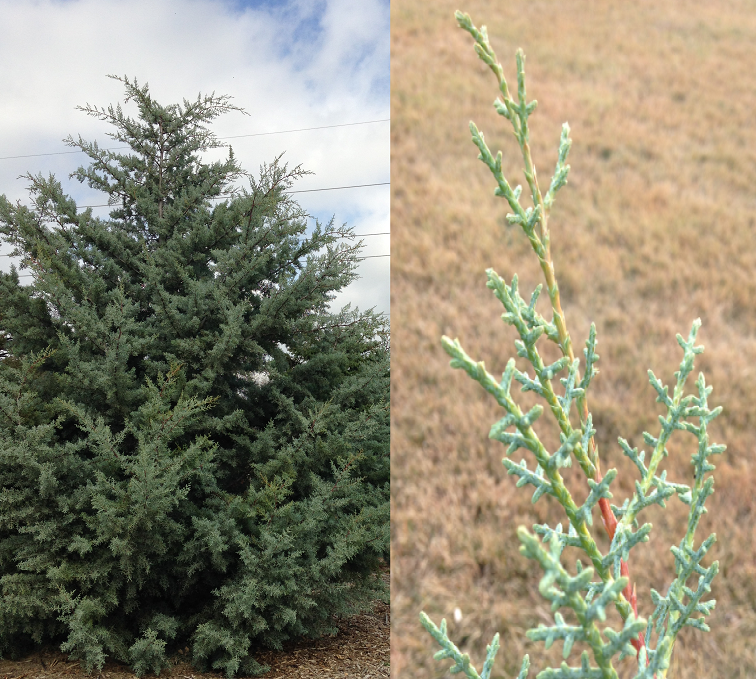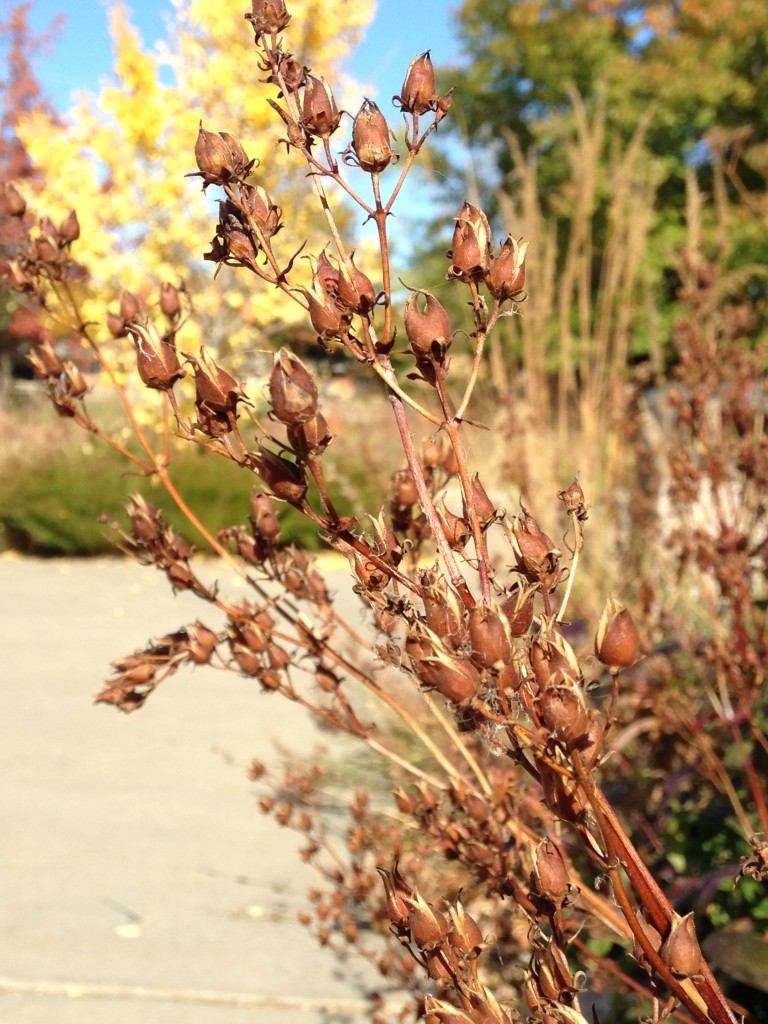Fall is a wonderful time to be the Arboretum grounds keeper – watering duties slow down, weeds are relenting, and I can wear my favorite sweaters to work. Brisk mornings and the coppery hue of the landscape make for a pleasant work week.
But wait … what’s that smell?
Working in many different areas of the Arboretum has led me to discover some autumnal aromas that are downright unpleasant. It isn’t the cinnamony smell of pumpkin spice latte on the wind, but a stench of skunk and old cheese! Early fall moisture and warm days bring out the worst of smells in some of our flowers and shrubs, causing me to cringe when working near the fetid few.
If you have visited us recently, perhaps you too are wondering about the foul air. Wonder no more! I introduce to you the top three smelly plants at the Arboretum:
1. Cypress (Cupressus arizonica)
While cypress trees traditionally have a pleasing aroma, this variety emits an odor redolent of skunk. The icy blue foliage may be off putting at first sniff, but if you rub the needles between your fingers the scent becomes influenced by citrus and spice, making it somewhat less offensive and almost forgivable. Almost.
Many evergreens have strong scents, and they get their classic “Christmas” smell from gummy resins, which contain high concentrations of terpene alcohols and acids. Unfortunately, this tree smells less like Christmas and more like roadkill.
2. Penstemon (Penstemon digitalis)
Penstemon is a showy spring bloomer that produces reddish, tear-drop shaped seed heads. But when you decide to cut those seed heads down for clean up or collection, I suggest pinching your nose! The bloom doesn’t have a strong scent, but the smell of the seeds and pods has been likened to animal vomit, or very acidic urine. The seeds themselves, though tiny, seem to make the biggest stink – after handling seed, it takes many rounds of hand washing to remove the tangy, kitty-litter smell from your fingers.
3. Rough-leaved dogwood (Cornus drummondii)
Dogwoods grow in dense thickets and are a popular choice for creating natural borders. Because of their thick cover, they are attractive to wildlife and nesting birds. But they are not attractive to the human nose. Dogwood leaves smell ever so slightly of curdled milk. In calm, humid weather, walking near our dogwood plantings can feel as if you have a dirty gym bag on your face. Luckily, as cooler weather sets in, the foul air around these plants seems to dissipate.
So, why the big stink? For flowering species, exuding sweet smells is a signal to bees and butterflies that nectar is ready. No two floral scents are alike in molecular makeup, allowing for specific pollinator attraction. Most plants that give off an unpleasant balm are attracting a less charismatic type of pollinator – flies and beetles. If not for pollination purposes, a malodorous plant may be using its sour perfume as protection from herbivores such as rabbits and deer.
Whatever the reason, I won’t hold the smell against them…but I may choose to avoid pruning them for as long as I can get away with it!


